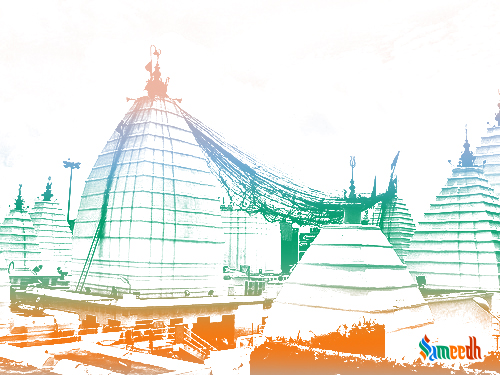The significance and relevance of the holy temple built for lord Shiva in Jharkhand.

Baba Dham, Deoghar, Jharkhand; Image Source: Ravishekhar Ojha
LOCATION
The Jyotirling are a symbol of the Hindu god of destruction, Shiv. The Vaidyanath or Baidyanath Jyotirling is situated in the Indian state of Jharkhand, in Deoghar of Devghar, meaning house of gods. It is a massive pilgrim sight according to Hinduism. Other names for this Shiv temple are Baba Dham or Baidyanath dham temple. Vaidya or Baidya translates to doctor or an individual who takes care of medical needs. More than one single temple, it is a massive cluster of 21 other sacred places of worship.
This Jyotirling is also called as Shakti Peeth, meaning a powerhouse of Shakti or energy.
MYTHOLOGY
12 divine Jyotirlingas, shrines of Shiva are spread across the Indian subcontinent, each built as a powerhouse for defeating evil and negative forces.
The tale around the existence of Jyotirling is such that both Brahma, creator of life and Vishnu, the almighty sustaining life, quarrelled as to who is the greater and the stronger. Shiv pierced all three worlds; heaven, Earth and hell through a beam of light which extended both ways endlessly. Shiva asked them to search for the edges of this beam of light. They both gave it a try but in vain, such was the superiority and grandness of Shiva’s powers. The Jyotirlings denote the greatness and numerous strengths of Shiv.
One legend weaves the story behind Baidyanath Jyotirling. It is believed that Ravan, the asura king and chief of Lanka who was defeated by Ram, meditated for long hours and diligently prayed to lord Shiv for a boon to be invincible and impotent. He gave up each and every one of his ten giant heads up by cutting them off as a sacrifice. This was noticed by Shiv and left him impressed. He firstly stitched up Ravan’s heads together, being a “Vaidya” or Doctor. He then gave him an entire Jyotirling as a boon or reward. Although, Ravan was wanted by Shiv that he would have to always carry this holy structure off the ground as whenever it will be placed on land, it will grow roots and install itself there. Ravan agreed and carrie the humongous structure on his back as he was a strong man. But to cause him disturb, HIndu god Varun of water entered his body, putting pressure on his system and making him want to relieve himself immediately. He saw a Brahmin on the way and decided to give him the temple while he excused himself. The priest turned out to be none other than Vishnu who placed the temple mischievously and let it grow its roots. Ravan was furious as he saw this and tried to uproot the structure in vain. He did manage to break a few bits of the top part. He finally decided to offer prayers to that still structure itself.
ARCHITECTURE AND INTERIOR
There are 21 temples together which form the core of this Jyotirling. The Baidyanath temple faces the east direction. As mentioned in its establishment tale, the topmost part of the lingam statue is slightly broken from when Ravan had tried to lift it away. Like most Jyotirlings, this too has a water body nearby, a lake by the name of Shivaganga. The architectural style of this Shiv temple is pagoda where it is made with stone. The temple walls are high and also made out of stone.
The other Jyotirlings too have their own unique tale of emergence, be it the one at Omkareshwar or Somnath or Nageshwar. Each one of these structures carry a particular essence, style of architecture and contributes fairly to Hinduism.
